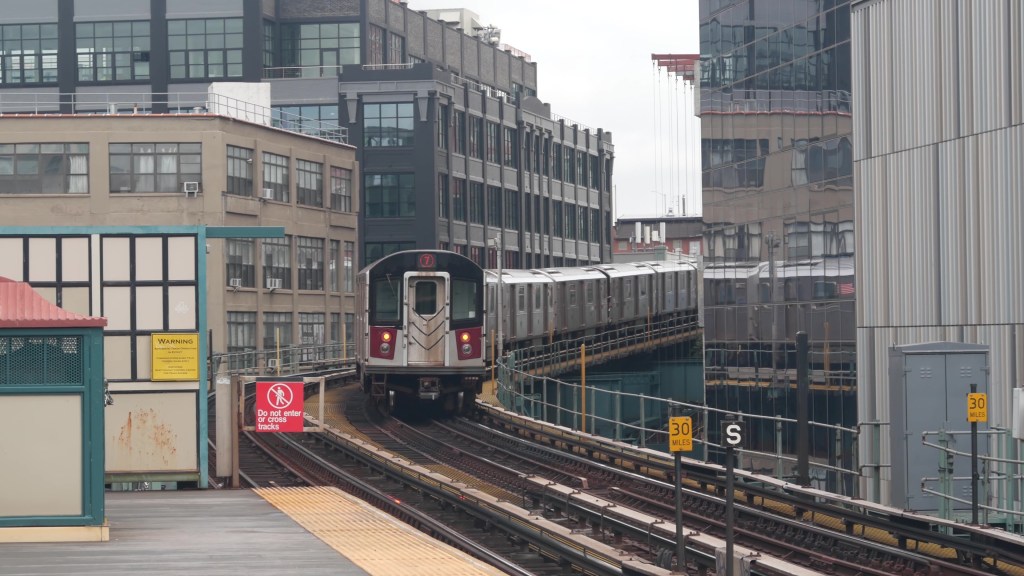Can any long-time Queens resident ever imagine swimming or fishing in what many consider one of the most highly polluted waterways in New Yorkthe Newtown Creek?
Members of Community Board 5 were recently paid a visit from a project team created by the New York City Department of Environmental Protection (DEP) who are involved in a program to improve the quality of water of the creek.
According to the project team speakers, the DEP is conducting a program entitled "Use and Standards Attainment Project" (USA Project). USA Project is a four-year program that was initiated in August 1999 and has already begun the development of a comprehensive plan that is designed to address water quality improvements in 23 specific bodies of water located throughout New York City. The areas selected were based upon New York’s drainage patterns and on state and federal water quality classification standards.
John Leonforte, Chief Intergovernmental Coordination, Bureau of Environmental Engineering, Department of Environmental Protection, gave the board an overview of the program. "We’re going to conduct studies of these water bodies to determine how to meet standards and how to make the best possible use that the communities would like to see," said Mr. Leonforte who added that Newtown Creek has three community boards along its shores made up of Queens Community Board 5, Queens Community Board 2, and Community Board 1 in Brooklyn. "We would like to form committees made up of community people to work with us on this study."
According to distributed DEP literature, the program will include joint advisory committees consisting of a citywide Quality Citizens Advisory Committee (composed of representatives of citywide private and public-interest stakeholders), a Government Steering Committee (composed of regulators and other agencies directly involved in plan-related responsibilities), and a Technical Advisory Committee (a team of independent experts) serving as resources who will provide ongoing guidance throughout the planning process.
A tributary of the East River, Newtown Creek is located in the northwest section of the boroughs of Brooklyn and Queens. The 3.5-mile long creek, generally flows in an east-west direction, and includes Dutch Kills, Maspeth Creek, Whale Creek, the East Branch and English Kills. Having a width of between 200 to 300 feet, and ranging from 10 to 40 feet deep, the creek is currently used by commercial and municipal shipping as well as barging.
Stephen Whitehouse, a principal of the Saratoga Associates, which is a consulting firm working with the DEP, mentioned that Jamaica Bay and its tributaries are one group of assessments to be conducted. The East River and its tributaries are a second group, while the third and final group of assessments will be looking at the open water areas of New York Harbor and selected tributaries.
"Large portions of the waters surrounding New York are cleaner now than they have been in the last 90 years," said Mr. Whitehouse adding that although cleaner water is a step in the right direction, much more needs to be done if the waters in question are to be used in ways communities intended. "The use and standards attainment project will divide the city into study areas? Our goal would be to devise a program that brings the water quality to a level that supports the uses that the people of New York want."
Whitehouse stated that the project team would analyze the physical conditions of the creek as well as the potential for improvement. "Right now Newtown Creek is classified for fishing which is one of the lower classifications for water quality? We’re going to start first with assessments, such as biological assessments grabbing bottom sediment, using various techniques to identify fish and fish larva in the water, and water quality sampling," said Mr. Whitehouse.
Looking to move ahead with the project, Whitehouse stated that he would like to meet with the community committees or public-interest stakeholders as they are identified in the project. Mr. Whitehouse stated that he would like to see 15 or 20 stakeholder members that would be able to hold their first meeting sometime late February. "The goal at the end of the day, and the end of the day is a few years out, is to put together a program of water quality improvements that the city can plan for, budget, afford and get results from," said Whitehouse.
Voicing their opinion that they were also interested in protecting businesses in the district, Community Board 5 members stated that they were against the Department of Transportation’s (DOT) plans to put a fixed bridge on Grand Avenue, which would restrict commercial use on the East branch of the creek and put many businesses out of business. The board requested the support of the DEP in this regard and added that the proposed USA Project would be incomplete without a full cleanup of the Phelps Dodge site, which is on the banks of the creek.
Community Board 5 member Vito Maranzano questioned how a study of this magnitude could be conducted and the subsequent projects be implemented from the study with the city facing significant budget cuts. Whitehouse responded by stating that the projects are not yet identified and that the purpose of this study or process was to identify the projects and then figure out how much they might cost. "There is no funding in place for them [projects] right now. I wouldn’t be surprised if the first project that comes out of our process is more than eight to ten years down the road. We’re looking at a long horizon," explained Mr. Whitehouse.
































